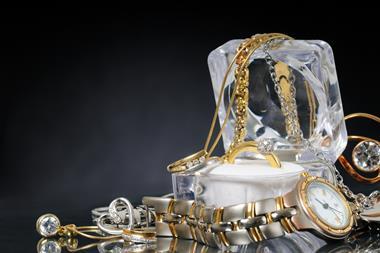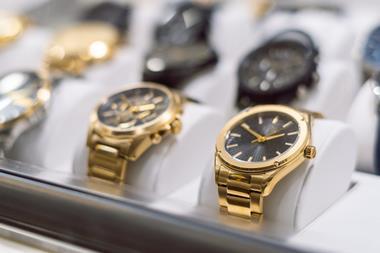Some luxury watches have more than tripled in price – even for second-hand watches – meaning that brokers have to be on the ball if they are to help prevent underinsurance for HNW customers
By Editor Katie Scott
The Covid-19 pandemic combined with inflation has had an intoxicating effect on retail prices – most notably within the high-end watch market.
According to Oxted-based auction house Doerr Dallas Valuations, a new stainless steel Rolex Submariner watch purchased in 2000 would have set consumers back around £3,000. Today, however, an equivalent model of watch costs £6,450, while a new Rolex Submariner is now priced at £13,500.

The firm, which provides independent valuations, added that even second-hand Rolex Submariner watches are selling for sky-high prices – a second-hand replacement of the year 2000 model of the watch, for example, is currently selling for around £10,000, while versions featuring the green bezel are costing up to £30,000.
This escalation in watch prices is having a knock-on effect on claims and underinsurance within the high net worth (HNW) arena, according to Mark Pierce, operations director at Criterion Adjusters.
Over drinks at London hotel The Ned, Pierce told me about one of Criterion’s clients that had bought a new, green bezel Rolex Submariner watch in September 2014 as a 50th birthday treat.
On collecting the watch, the client called his broker and added it as a specified item on his HNW insurance policy, even extending the cover to include all risks away from home as well.
Pierce explained that the insurer covering the client’s watch used “index linking methodology”, meaning that the watch’s insured value would be adjusted in line with changes in inflation, deflation and the cost of living.
“Pre-pandemic, in September 2019, the specified sum was adequate to meet the replacement cost of the watch. Indeed, subsequent renewals followed and at renewal in September 2021, it was insured for a specified sum of £7,224,” he said.
The problem arose, however, after the client and his wife were mugged in April 2022 and the insured watch was stolen. The client subsequently made a claim, but swiftly found that the current specified value of the watch, according to his insurance policy, was “almost £18,000 short of the second-hand replacement value”.
Pierce continued: “[A] simple online pricing investigation suggests [that] the current cost to replace [the watch] with a second-hand model - new ones are not available - is circa £25,000.
“The issue here is that simple index linking may not be enough. The customer and broker need to understand the market for replacing [a] watch should it become lost.
“Prices of certain Rolex models have exploded due to a combination of factory production diminishing during Covid, global supply chain issues and pent-up global demand.

“While the majority of HNW policies do not carry any direct penalties for underinsurance - misrepresentation excepted - ‘perils based’ covers very often have average conditions. Application of that average condition can result in the claim sum being proportionally reduced to reflect the level of underinsurance.”
Rocketing prices
Steve Moores, client director in broker Aston Lark’s private clients division, agreed with Pierce that “this is a real issue, particularly for watches and Rolexes”.
Nick Gavin-Powell, a member of the private client team over at broker Miller, also concurred with this trend. He said: “We have seen numerous cases where watches have doubled or even tripled in value in just 12 months – we had a Patek Philippe go from £40,000 to £150,000 in 12 months.”
As well as the underinsurance risk, Gavin-Powell added that the uptick in watch prices and the increased prevalence of mugging is impacting HNW insureds’ watch wearing habits and home security arrangements too.
“[It] opens up questions about wearing habits as people realise the value on their wrist has increased, the frequency [of] people being mugged has increased and, therefore, people are choosing not to wear their watches as frequently and are keeping them for special occasions only,” he explained.
“This trend is also having a knock-on effect on the security arrangements at home, with clients now having to either upgrade their safe to a more secure version or installing [or] upgrading their alarm system.”
Mitigating measures
Pierce, Moores and Gavin-Powell all agreed that the best way to prevent potential underinsurance for luxury watches is to get an annual valuation, rather than stick to the typical three to five-year valuation cycle of pre-pandemic times.
Moores said: “Our advice is, firstly, to get a valuation for a watch, even if it’s just been purchased. It’s possible, even likely, for some brands to be worth more than you paid for it. For watches, we’d really recommend annual valuations at the moment.”
Pierce added that his client’s case study “serves as a reminder to customers, brokers and insurers of the need to keep sums insured, especially for high-risk items, under annual review.”
Read: Mark Pierce - HNW sector experiencing claims cost uptick due to ‘sharp increase in building costs’
Read: In Focus - Ex-Love Islander’s burglary reawakens HNW underinsurance and social media risks debate
A further safety net can be found in some insurers’ policy wordings, Moores continued, if they feature a “clause which extends cover by a percentage above the valuation for a certain number of years”.
He explained: “The name of this clause varies from insurer to insurer, but it’s generally referred to as extended replacement cover. Brit’s extended replacement protection gives 200% of the valuation figure for up to three years. Covea [provides] 150% [of the valuation] for five years. But you’ve got to have a valuation first.”
Moores said that Aston Lark has an insurer comparison document, which “shows the differences between insurers in the mid and high net worth markets, right down to this level”.

“This ensures we’re giving new and existing clients the right advice and helps the client to buy on cover, not price. Unsurprisingly, cheaper policies don’t always give this extended replacement cover for jewellery and watches,” he continued.
“This level of detail in the advice we can give might seem quite dull, until you have a claim, then the right policy suddenly becomes more important.”
Gavin-Powell added: “Most insurance policies in our space will insure a watch on an agreed value, meaning clarity in the event of a claim.
“Some insurers will index link this amount at each renewal, but others do not, so [the] best advice is to check the value is adequate enough to replace the item on a regular basis.”
Brokers on the ball
To support HNW clients with this underinsurance threat, “it’s important to have a broker that’s on the ball, particularly if the client is looking to switch insurer”, Moores emphasised.
For me, helping clients around curveball and niche risks or issues – such as high-end watch underinsurance – is where brokers really add value and come into their own as an important part of the insurance ecosystem.
This is especially true regarding this particular issue because many clients will have gone out of their way to ensure their watches are added to their insurance policies and would subsequently assume that this simple step is all they need to do to receive a suitable claim payout – however this is now not enough to prevent them losing out financially if they need to make a claim.
Brokers with their fingers on the pulse will be aware of HNW watch price hikes and will be able to speak to their clients about the nitty gritty policy wordings and extra measures that can help prevent potential underinsurance.
In the FCA’s world of fair value and the upcoming Consumer Duty, this type of client support from brokers is essential.
What do brokers need to consider?
Mark Pierce, operations director at Criterion Adjusters, shares his top tips for brokers looking to tackle potential HNW underinsurance:
- Meet with clients to discuss and assess all sums insured and, in particular, any new additions and all valuables.

- Get a bona fide valuation for valuables worth up to 75% of any single article limit at least every three years.
- Understand how an insurer’s valuable limits - single article limit and overall valuables limit - work and make sure the client is fully conversant with this.
- Consider whether the installation of more and better security will result in enhanced coverage or a cheaper premium – for example, alarms, safes, patrols.
Hosted by comedian and actor Tom Allen, 34 Gold, 23 Silver and 22 Bronze awards were handed out across an amazing 34 categories recognising brilliance and innovation right across the breadth of UK general insurance.



















































No comments yet